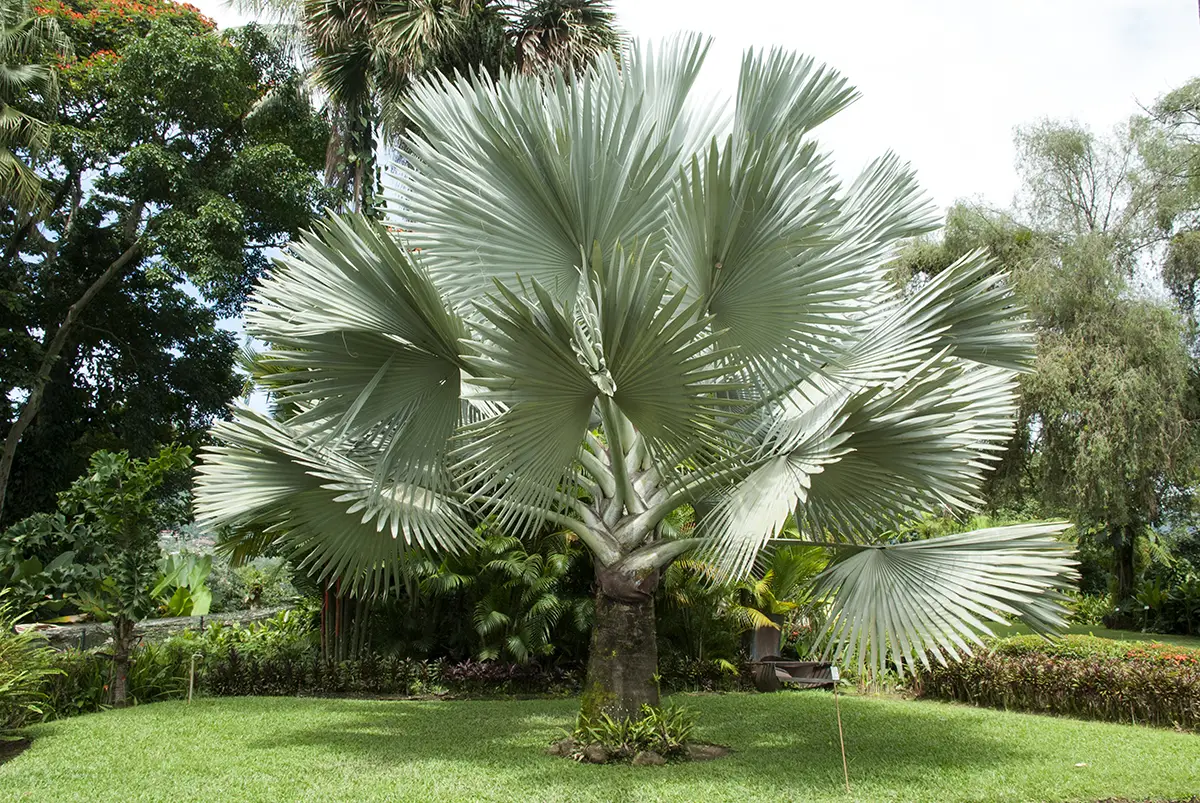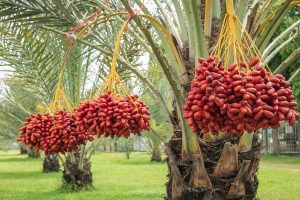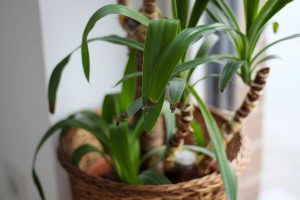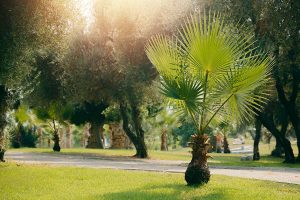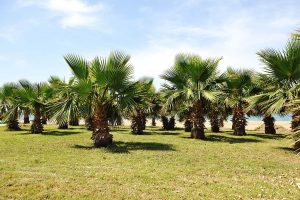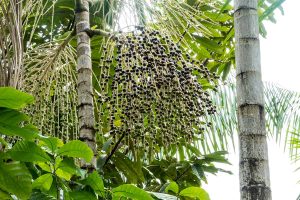Palm trees are iconic tropical plants that typically have gray-brown slender trunks and foliage in the form of dropping fronds, in shades of bright green through to dark green.
However, there are over 2600 species of palms, and among these, there is some color variation, especially if you take into account the colors of the many fruits palms can produce. Here we take a closer look at the colors palm trees come in.
Palm Tree Frond Color
The fronds of a palm tree are the evergreen foliage-like parts, which are technically not leaves but are often described as such. The most common color for palm tree fronds is green, but other colors also exist, including gray and blue.
European Fan Palm (Chamaerops humilis)
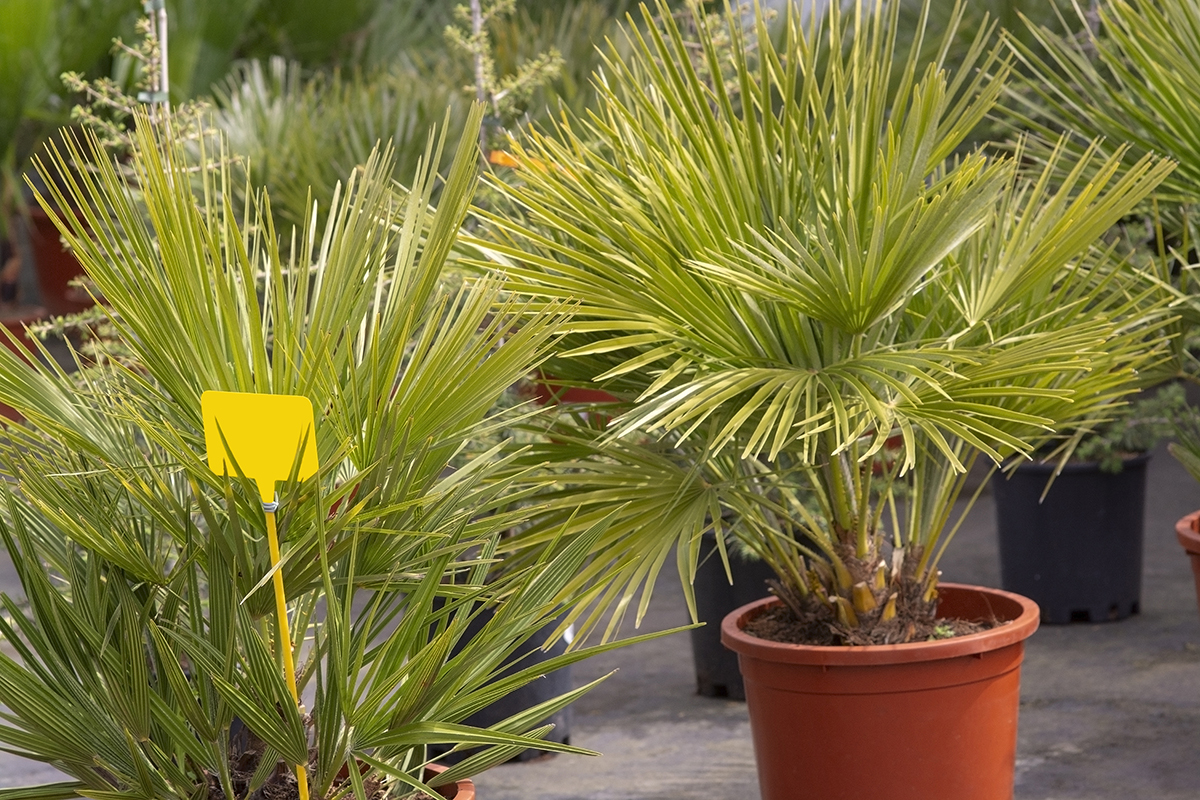
The fronds of this palm range from a light green color through to a silver-green color. This is a dwarf tree known for its ability to withstand very cold temperatures. It lacks one main trunk or stem, and as such appears more like a shrub than a tree.
Mazari Palm (Nannorrhops ritchiana)
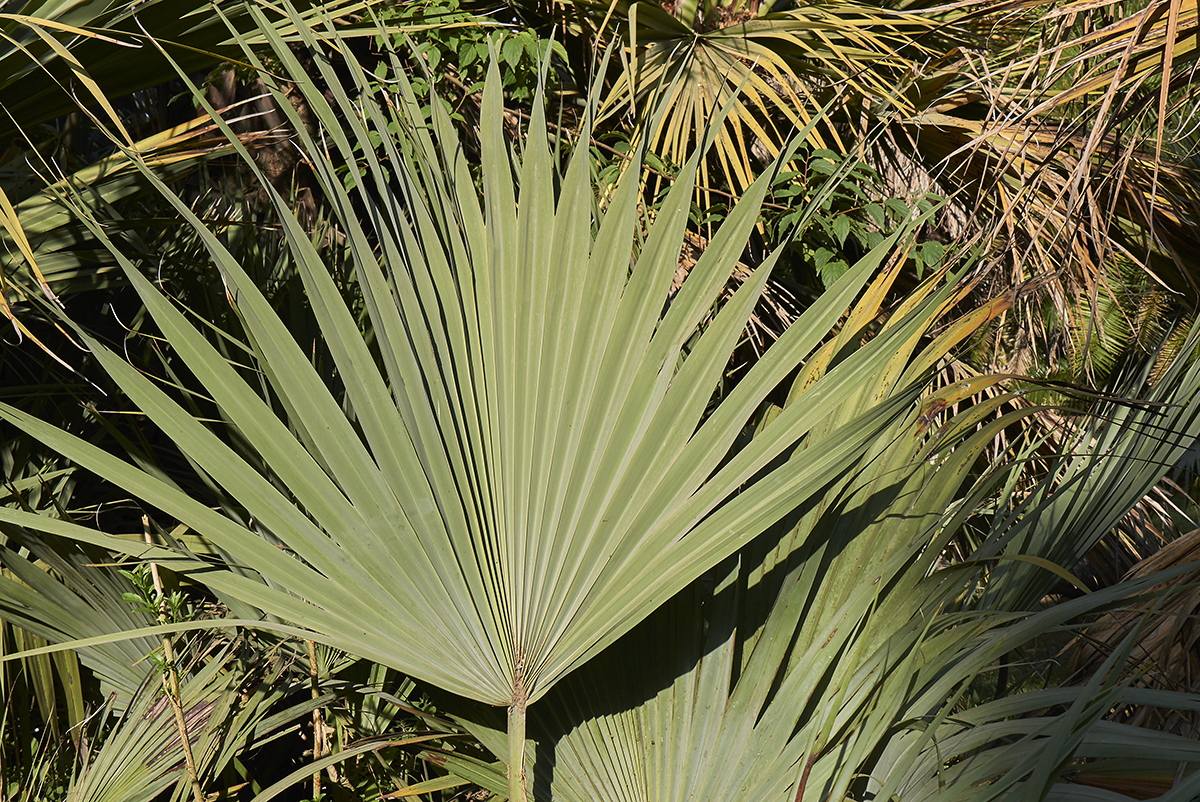
This palm produces fan-shaped leaves that have a spiky appearance. The color of these palm fronds is one of the most striking things about them, as they have an attractive silver-green or silver-blue finish.
Bismarck Palm (Bismarckia nobilis)
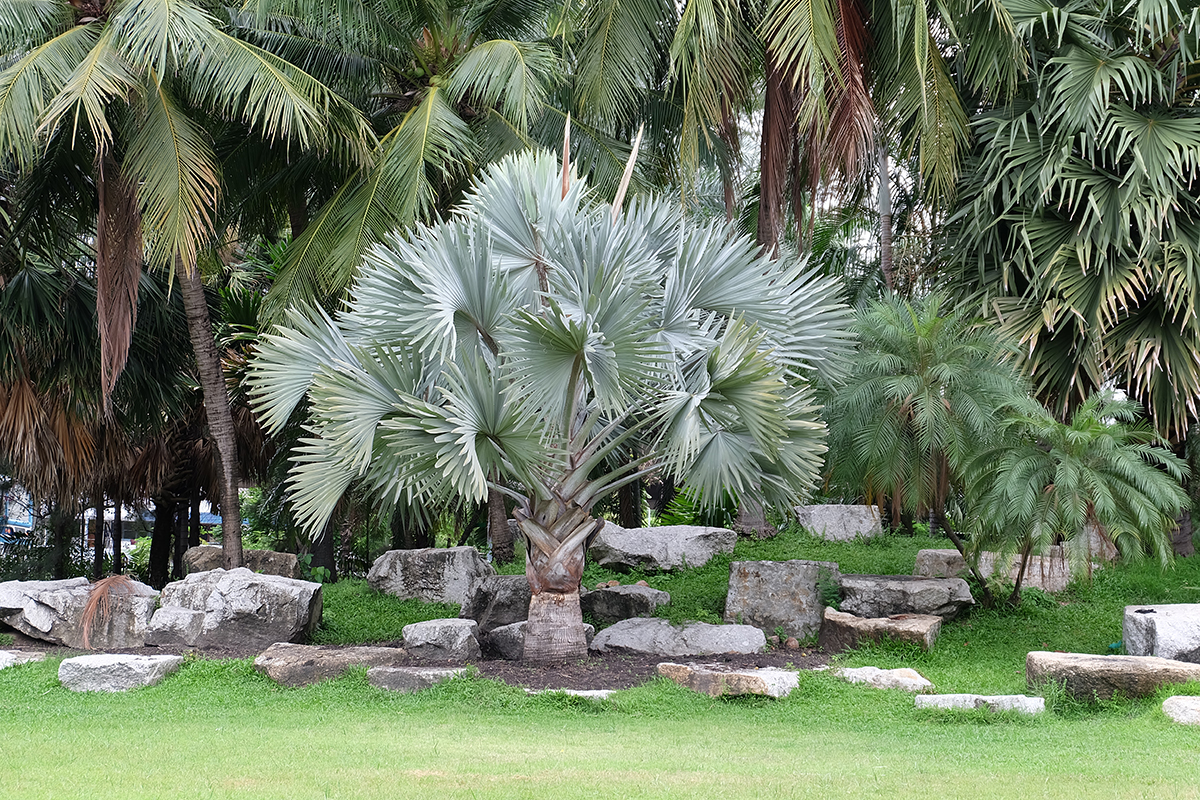
This is a striking palm that is easy to identify thanks to its spiky fan-shaped fronds in a steel blue color. It is a slow-growing palm that will reach ultimate heights of around 40 feet.
Red Latan Palm Tree (Latania lontaroides)
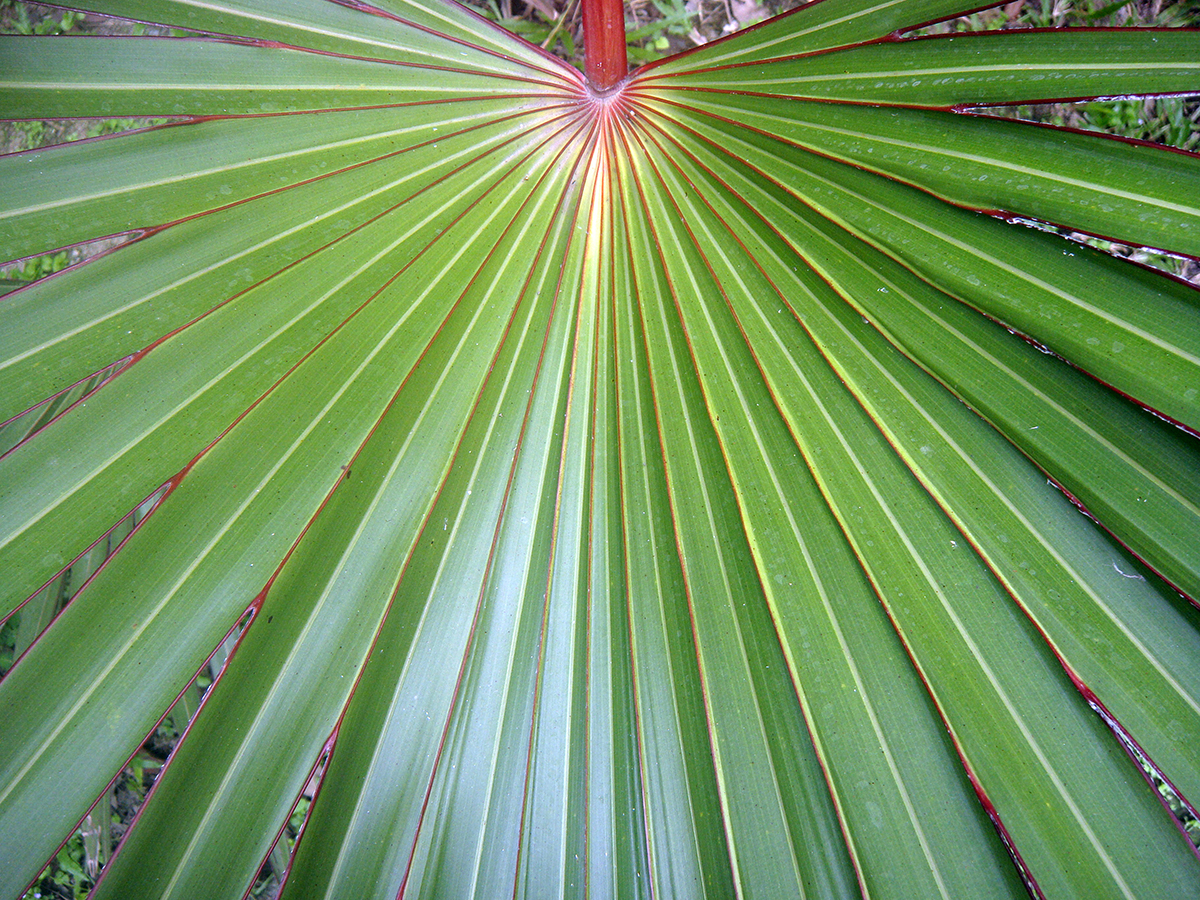
This palm has stiff, spiky, fan-shaped fronds which are tinged with red when they first appear, but they turn to a silver-gray color when mature.
Cat Palm (Chamaedorea Cataractarum)
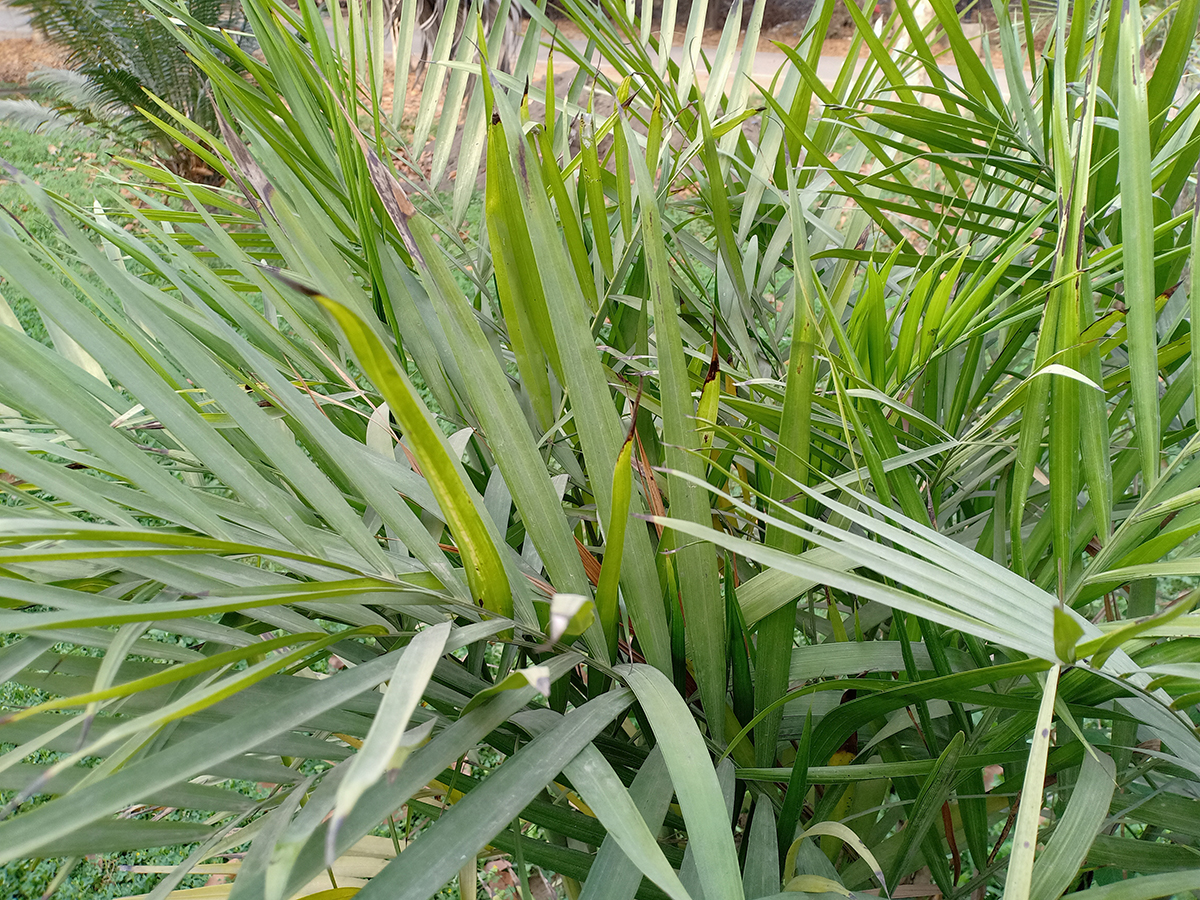
The Cat Palm has dark green pinnate fronds, which are produced in dense clumps. It is a low-growing palm that lacks a central trunk or stem and therefore appears to take on a shrub-like shape.
Dwarf Majesty Palm (Ravenea hildebrandtii)
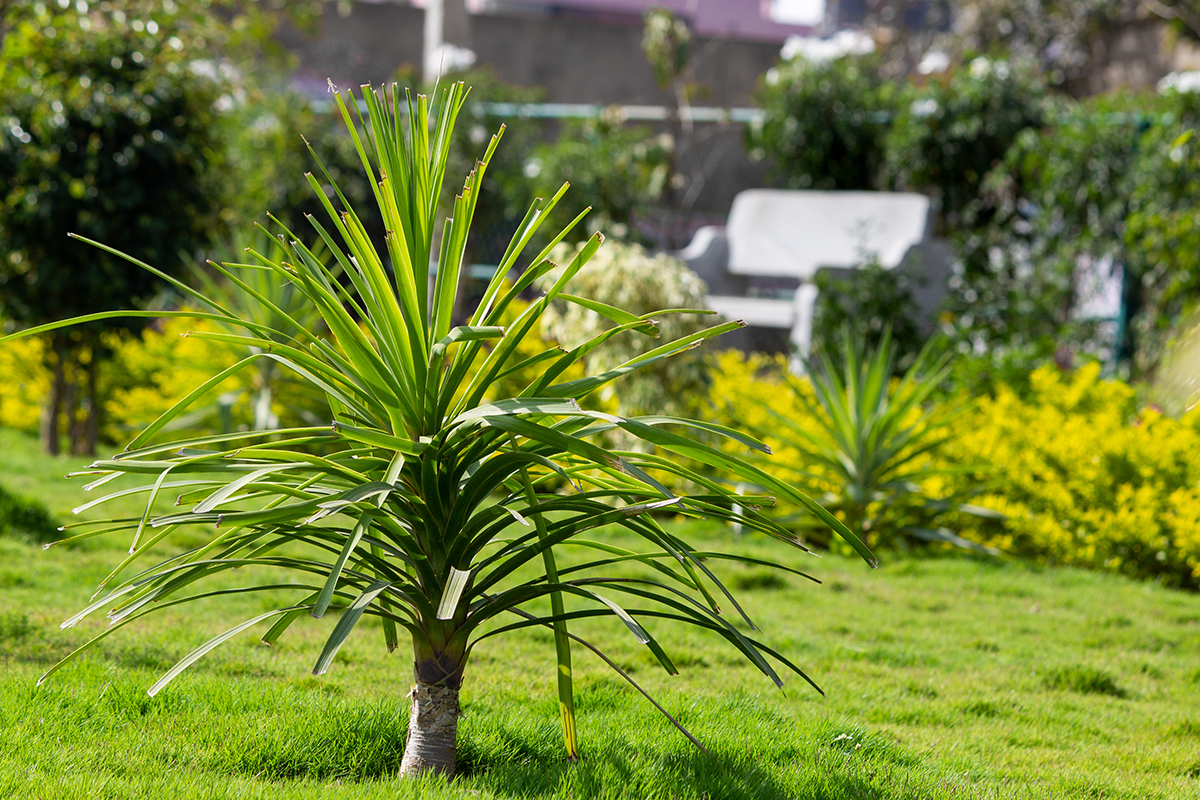
Dwarf Majesty Palm is a small palm tree that produces bright green fronds at maximum lengths of 3 feet. The fronds are pinnate, with up to 100 leaflets feathering out from each stem.
Palm Tree Trunk Color
The trunk on a palm tree is technically not a trunk at all because palms are not actually classified as trees. Instead, the true name for the ‘trunk’ is actually stem.
A palm can have one main stem, which appears as a trunk, or multiple stems, which create more of a shrub appearance. The stem or ‘trunk’ of a palm can come in numerous colors, including gray, brown, green, and even red.
Red Sealing Wax Palm (Cyrtostachys renda)
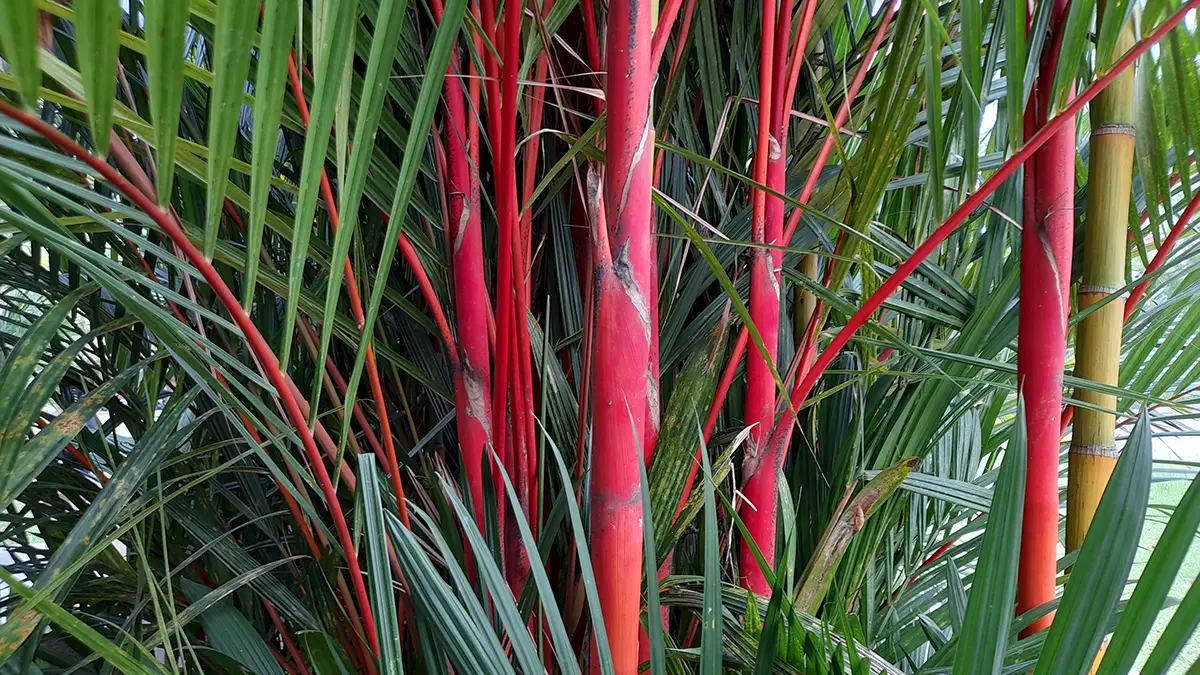
This is a multi-stemmed palm with bright green fronds and contrasting vivid red stems. The color combination makes this an easy variety of palm to identify and adds color to a garden without the need for flowers.
California Fan Palm (Washingtonia filifera)
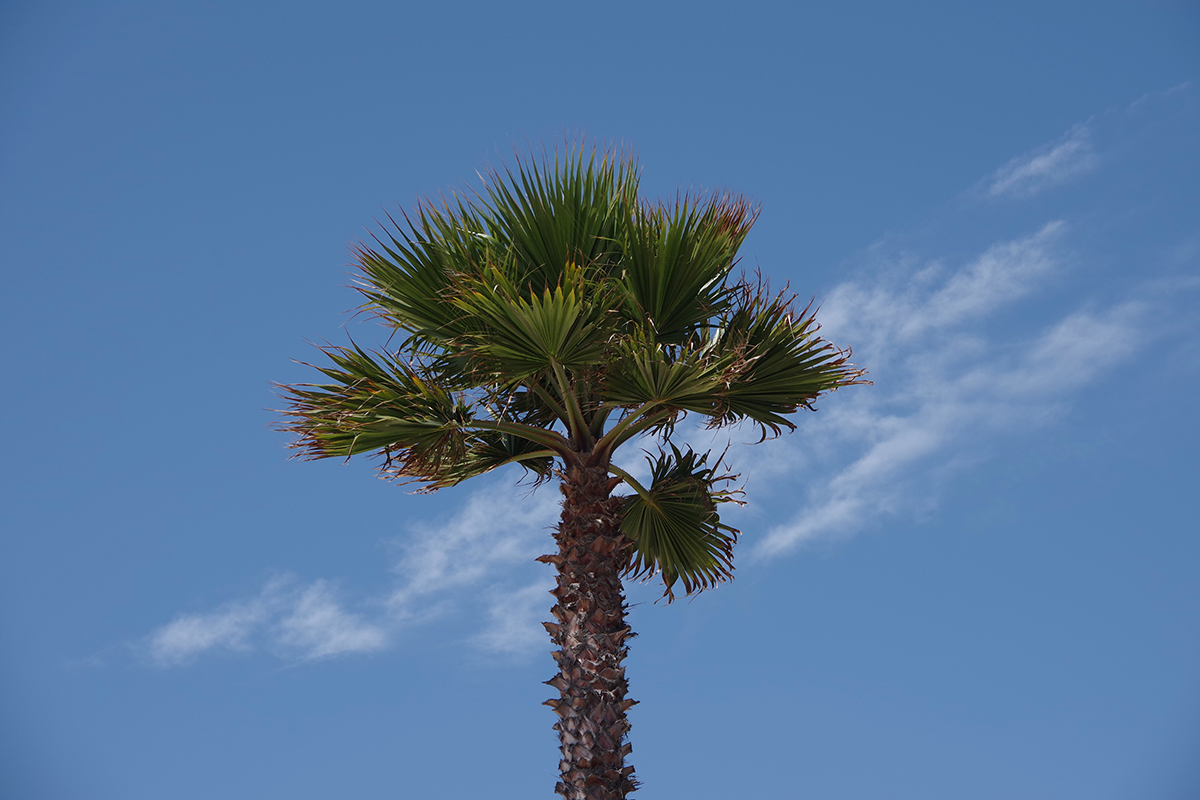
The California Fan Palm is medium in height, growing to an average of 50 feet tall. It has a slender, column-shaped trunk, which is an earthy shade of tan.
Chilean Wine Palm (Jubaea chilensis)
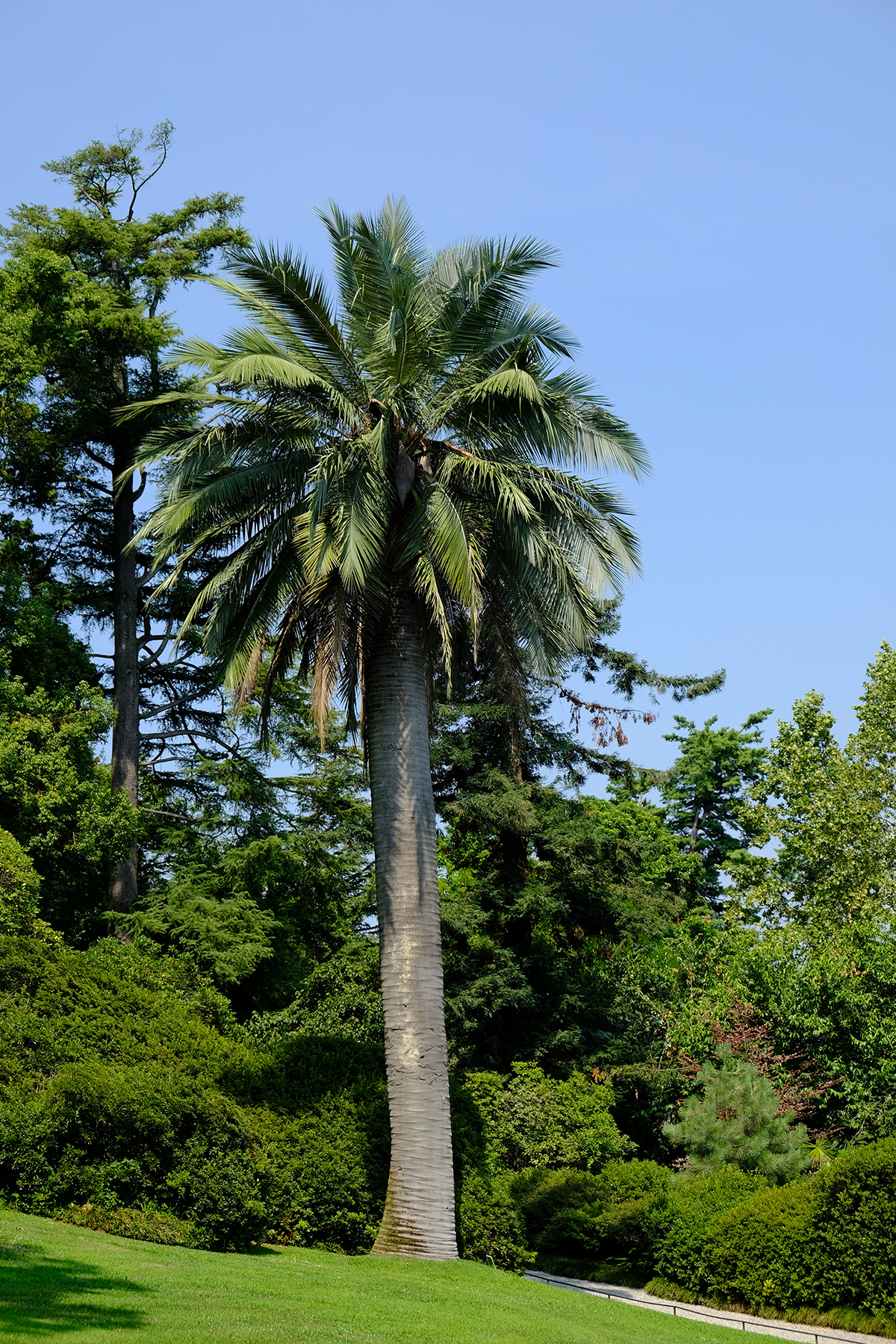
This palm has a thick trunk that can grow to a diameter of up to 3 feet. It is slightly swollen at the base but maintains a fairly consistent width above this. Unlike most palms, the trunk of the Chilean Wine Palm has a smooth texture, and it is a pale shade of gray.
Peach Palm (Bactris gasipaes)
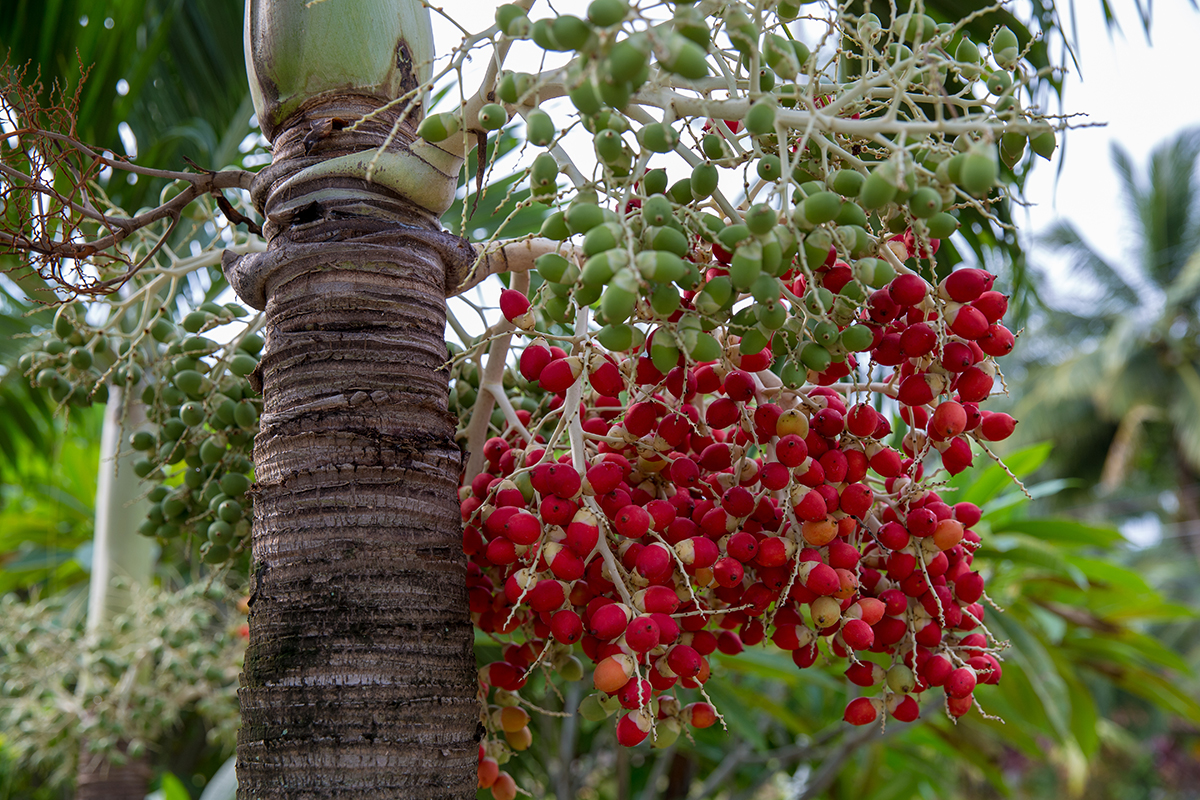
This palm is easily recognizable from its distinctive trunk. There are rings of spiky thorns running in bands around the circumference, which repeat all the way up the length of the trunk. Both the trunk and its thorns are brown.
Palm Tree Fruit and Flower Color
Most species of palm will produce flowers annually, which will then develop into fruits if they are pollinated. The various different types of blooms and fruits that develop on palms can add extra color to a garden or landscape.
Palm flowers come in a wide range of colors, from white and yellow, through to pink, red, and green. The palm fruits are often darker, in shades of blue-black, deep purple, brown, and dark red, but they also come in brighter colors, such as the Pindo Palm, which produces orange-colored fruits.
Date Palm Tree (Phoenix dactylifera)
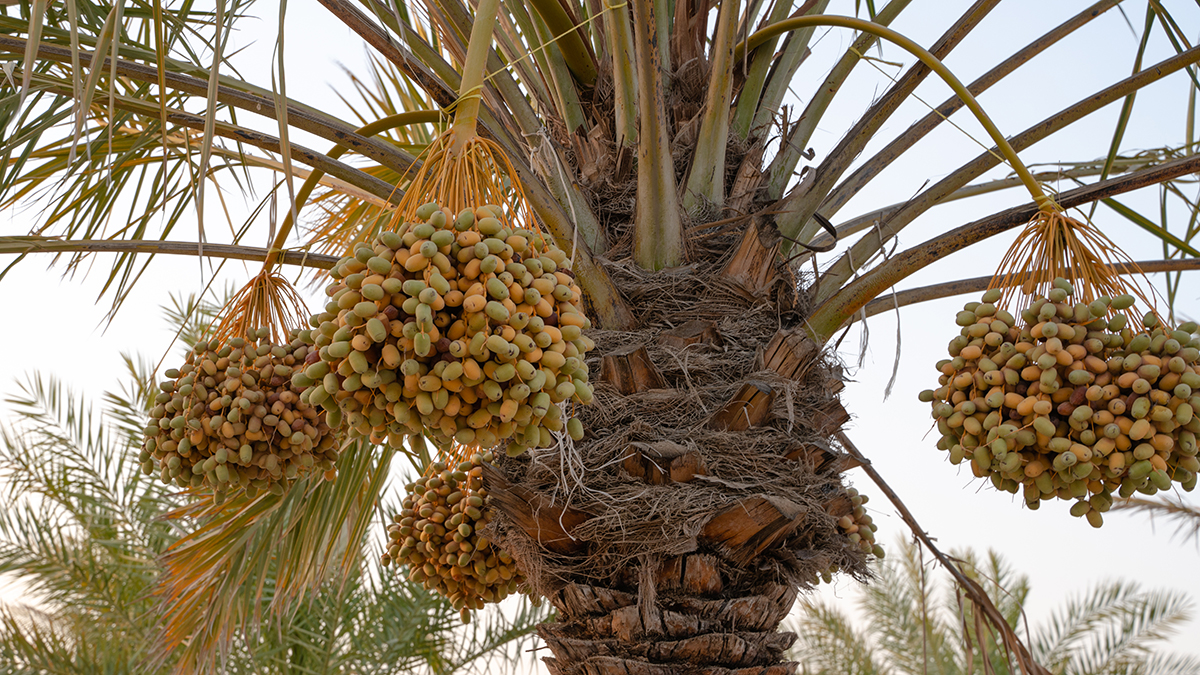
This is the palm tree that produces sweet and sticky date fruits which are consumed all over the world as snacks, in desserts, and in cooking.
When you find dates in the grocery store, they are typically brown and wrinkled, but when grown on the tree, they can be brown, red, or yellow. They are oval in shape and are produced in bunches.
Pindo Palm (Butia capitata)
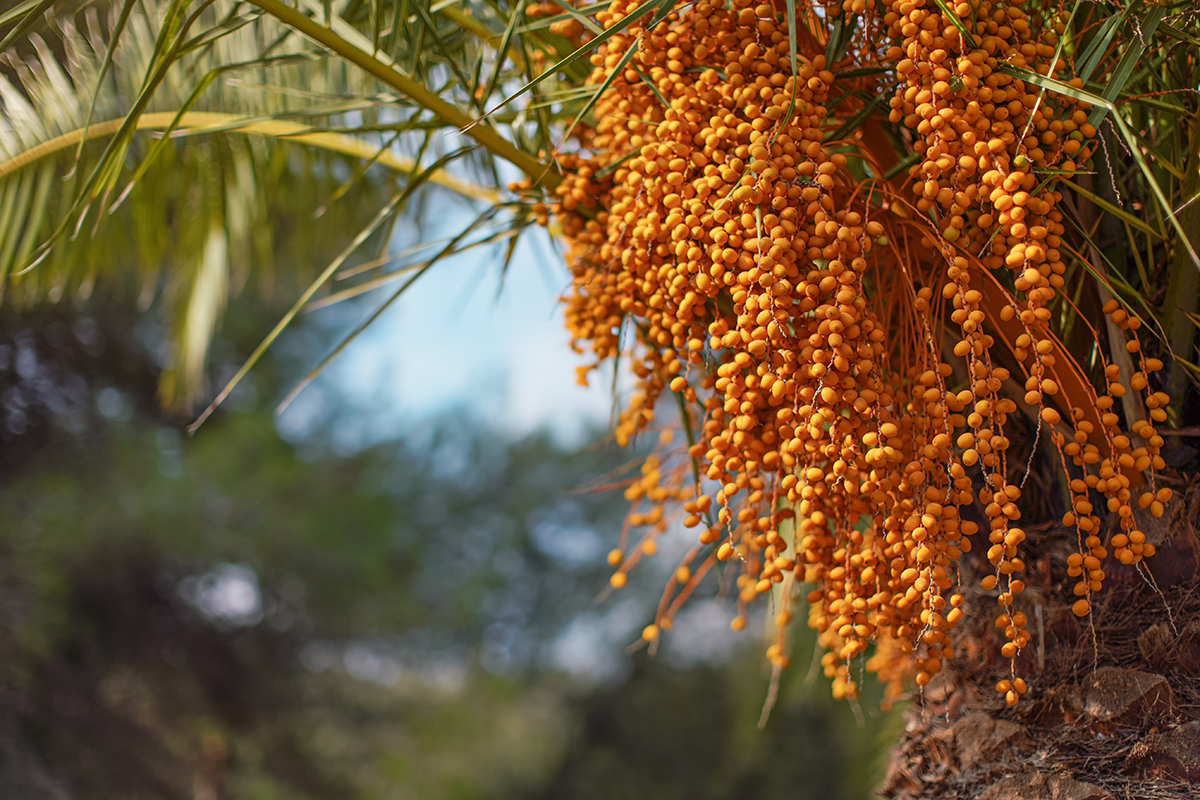
This tree is also known as the Jelly Palm because it produces fruits that are commonly used to make jelly. The flowers of this tree can be red, yellow, or white, and the fruits that follow will be orange or brown.
Florida Royal Palm (Roystonea regia)
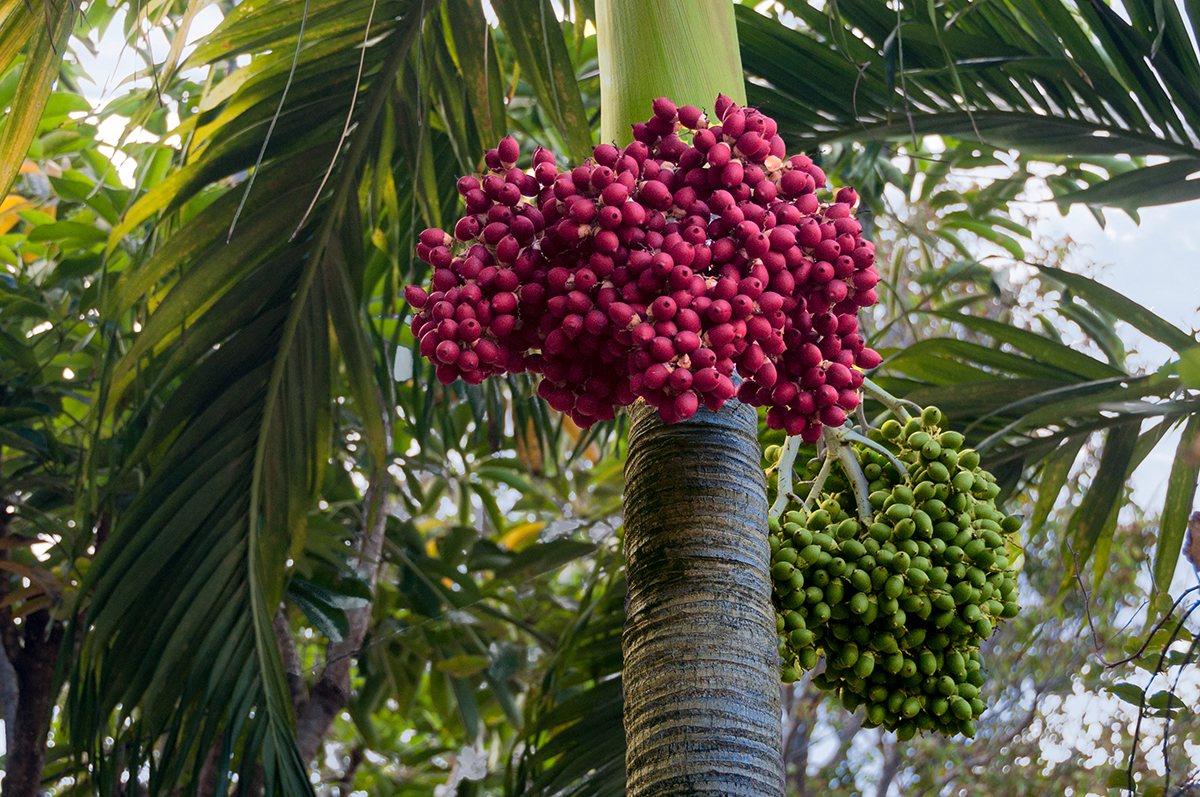
This is an attractive tree that is widely grown across Florida, California, and Texas for its ornamental appeal. It is also the national tree of Cuba. It produces pretty pink-white blossoms, which transform into clusters of round fruits. The fruits can be red, black, or dark purple.
Açaí Palm (Euterpe oleracea)
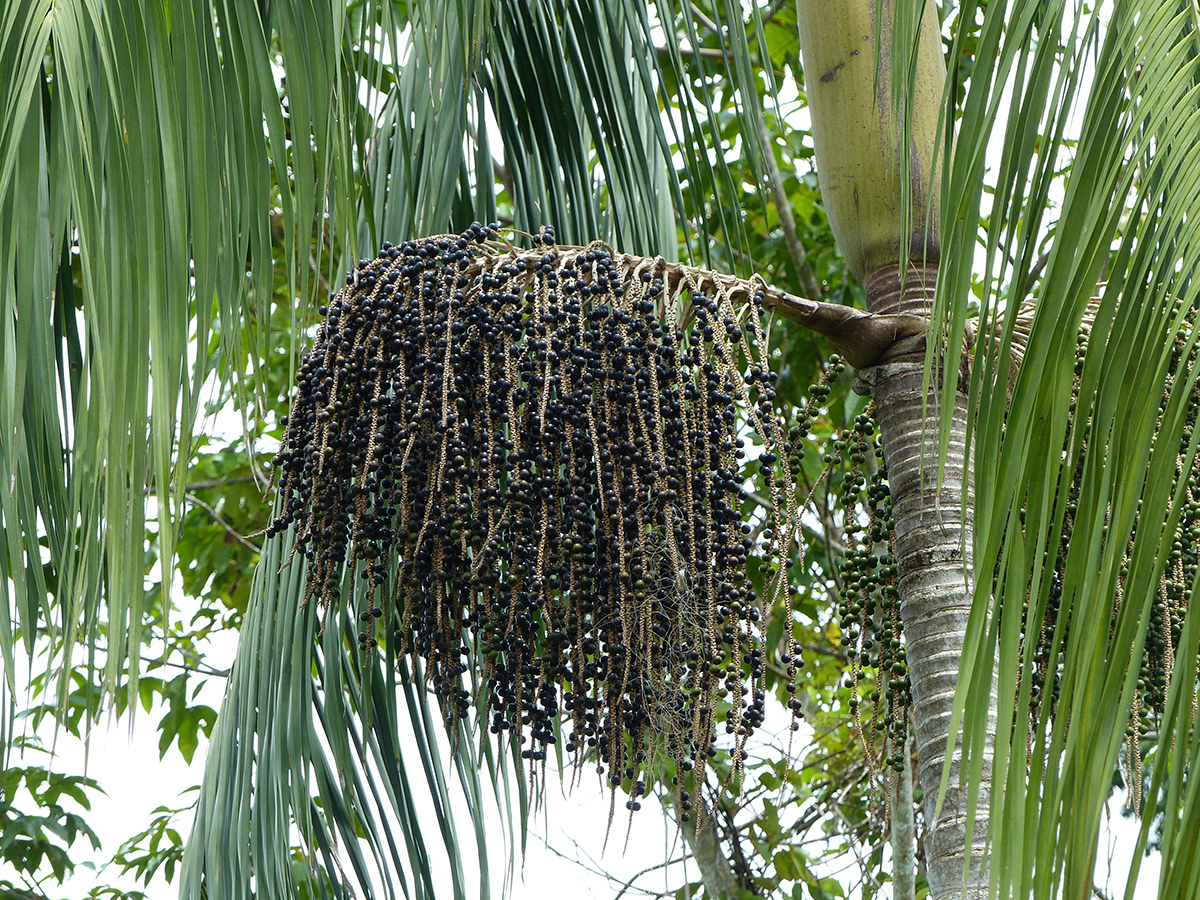
This palm is native to South America and has gained recognition in recent years because of the fruits it produces, which have become renowned as a superfood across the world. Acai berries grow in heavy clusters and are technically known as drupes, not berries. They are black and round, and each bunch can contain as many as 900 individual fruits.
Puerto Rican Thatch Palm (Coccothrinax alta)
This tall palm tree produces huge fan-shaped fronds that span as much as 5 feet in width. In spring, yellow flowers will emerge, which will develop into dark purple fruits later on. The fruits are quite small, measuring a maximum of half an inch in diameter.
Montgomery Palm (Veitchia arecina)
This is an attractive and graceful tree that grows to 80 feet in height. It produces green-white flowers in huge clusters beneath the fronds, which can span as long as 3 feet. The flowers develop into bright red or bright yellow fruits, which hang beneath the foliage on long, pendulous stems.
Fishtail Palm (Caryota mitis)
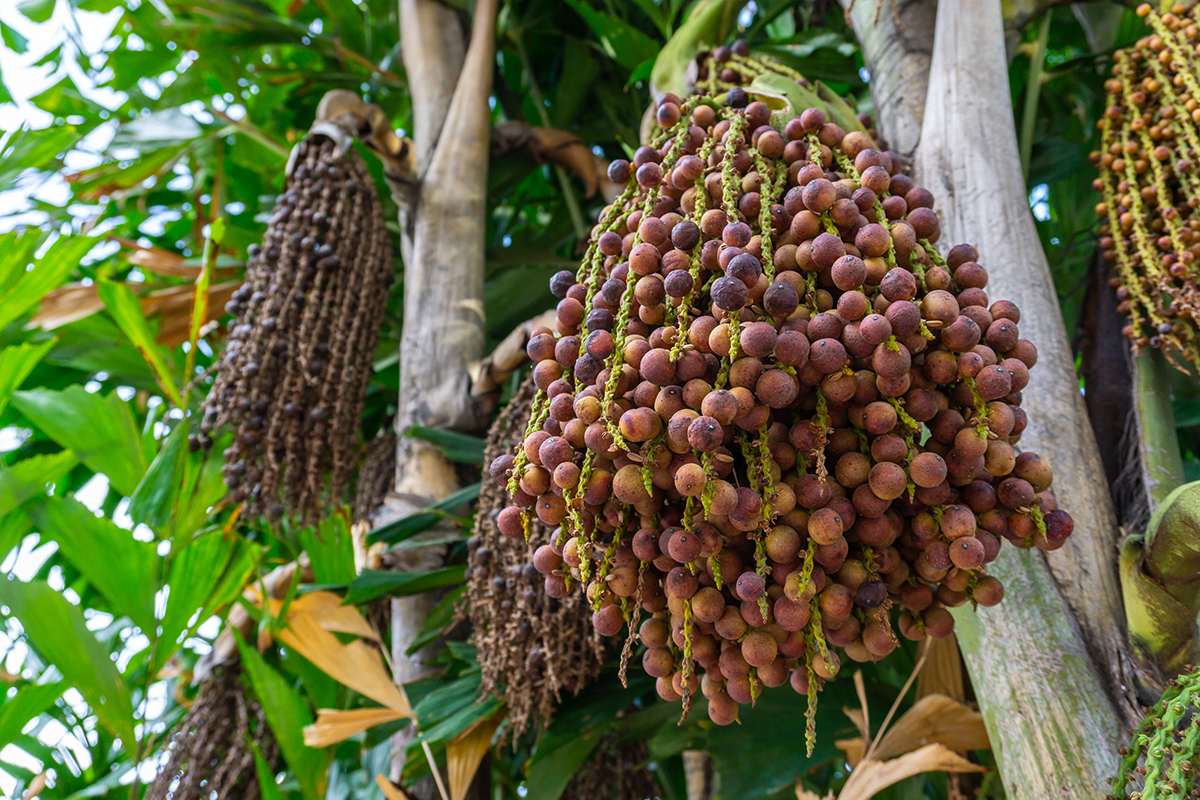
The Fishtail Palm is easy to identify due to its jagged leaflets that heavily resemble fishtails, but they can also be recognized by their pretty cream-colored blossoms. These flowers develop into dark wine-red fruits. The drupe fruits are poisonous and should not be ingested.
Guadalupe Palm (Brahea edulis)
This is a small to medium-sized tree which has a thick trunk and large, showy fan-shaped fronds. It is a popular landscaping tree because of its dramatically spiky crown and the shade it provides. The flowers of this tree grow between the fronds and are pale yellow or cream in color.
The flowers develop into fruits that are initially green but become black when they are ripe. They are sweet-tasting fruits with a flavor that resembles dates. They can be eaten fresh and are also popularly used in cooking.
